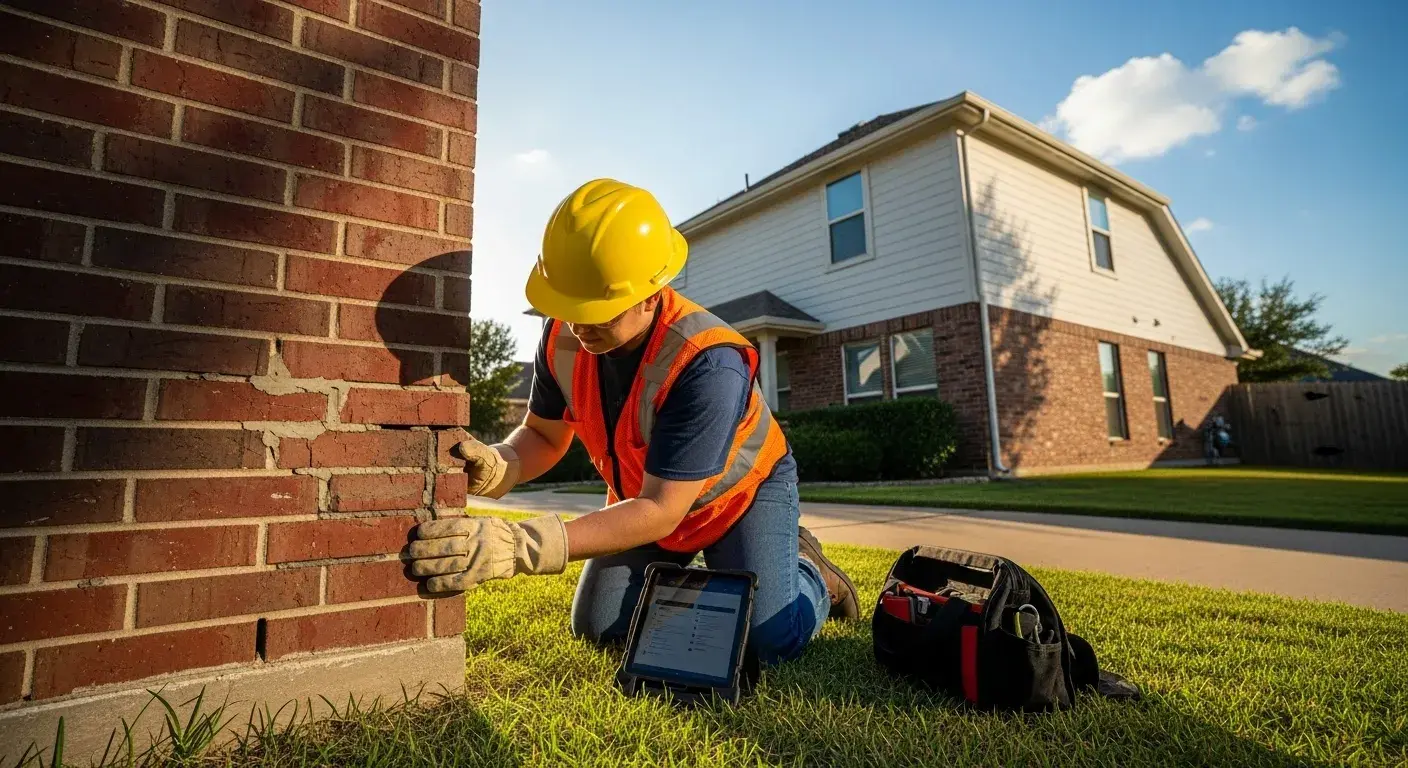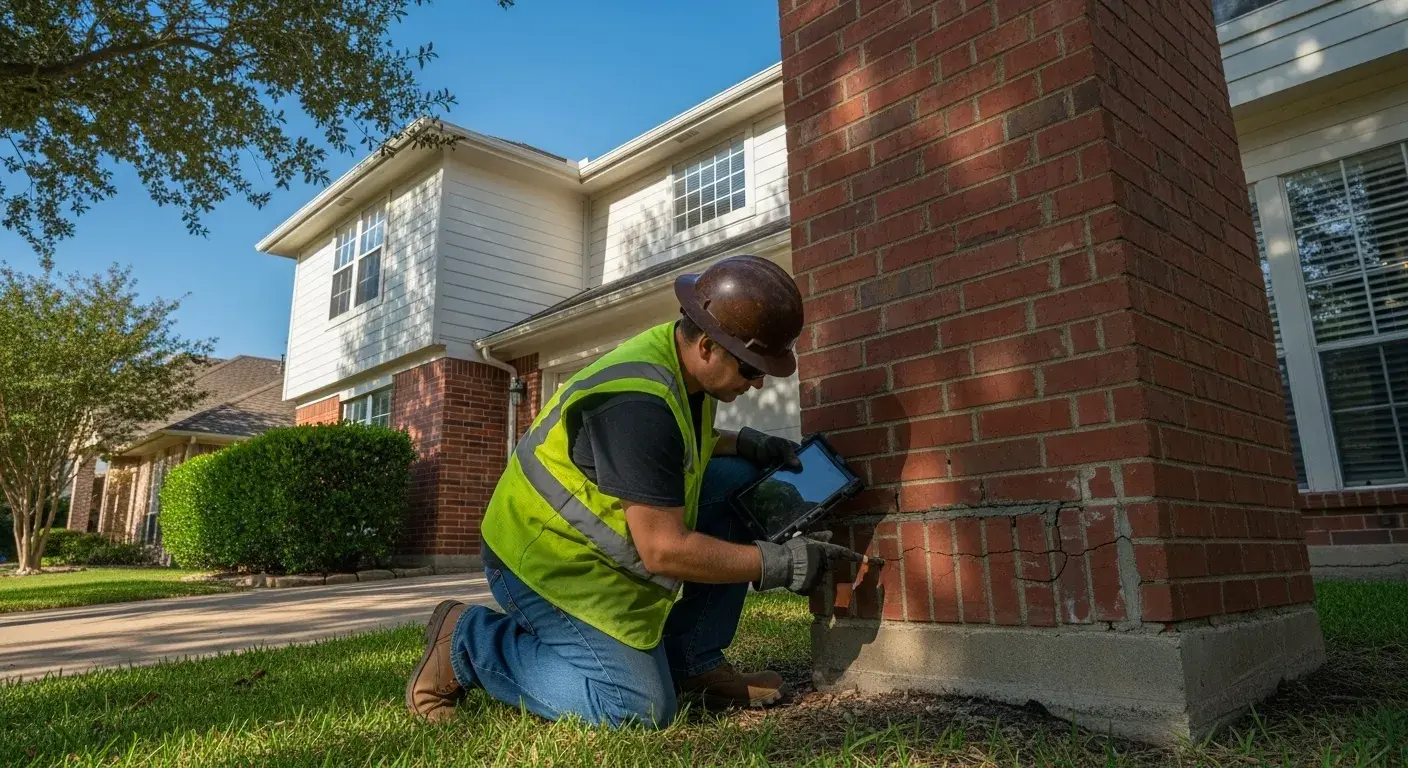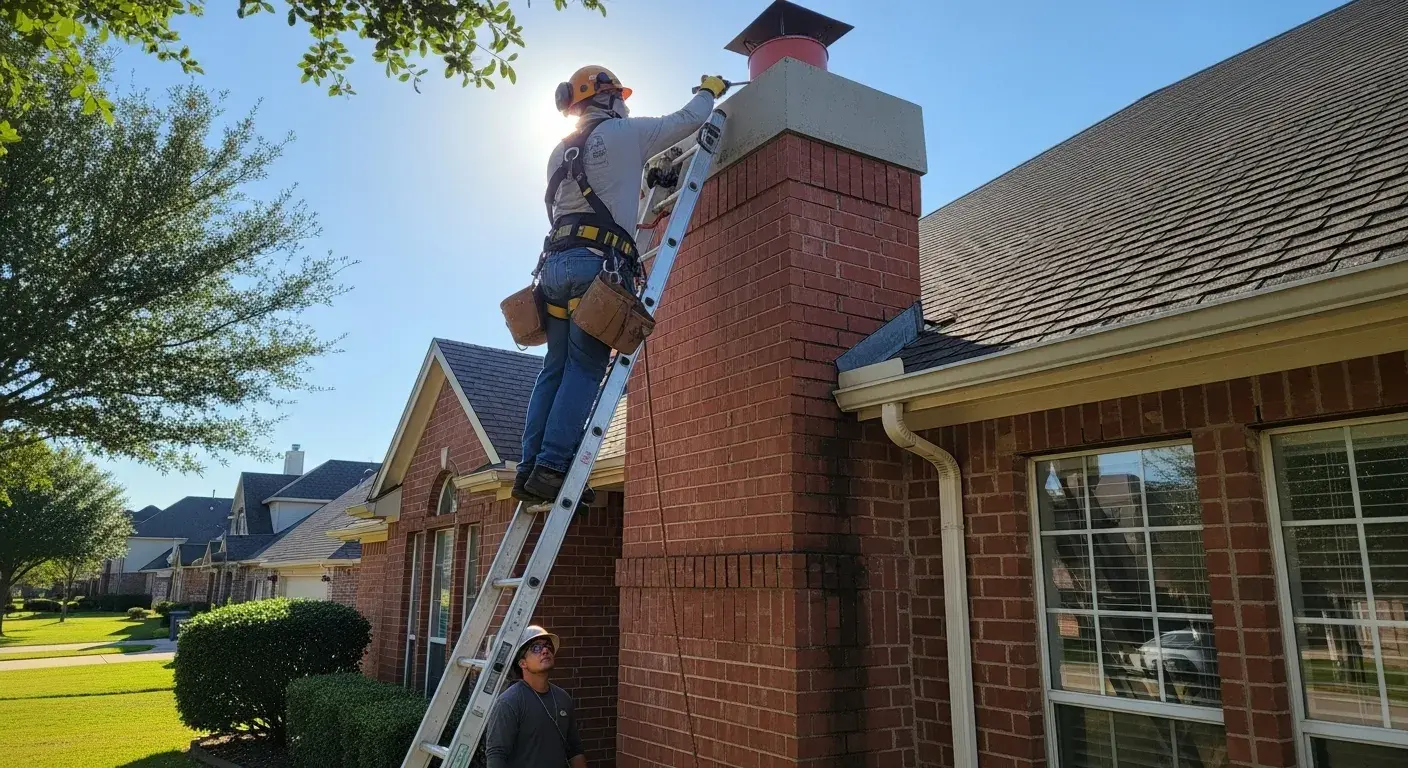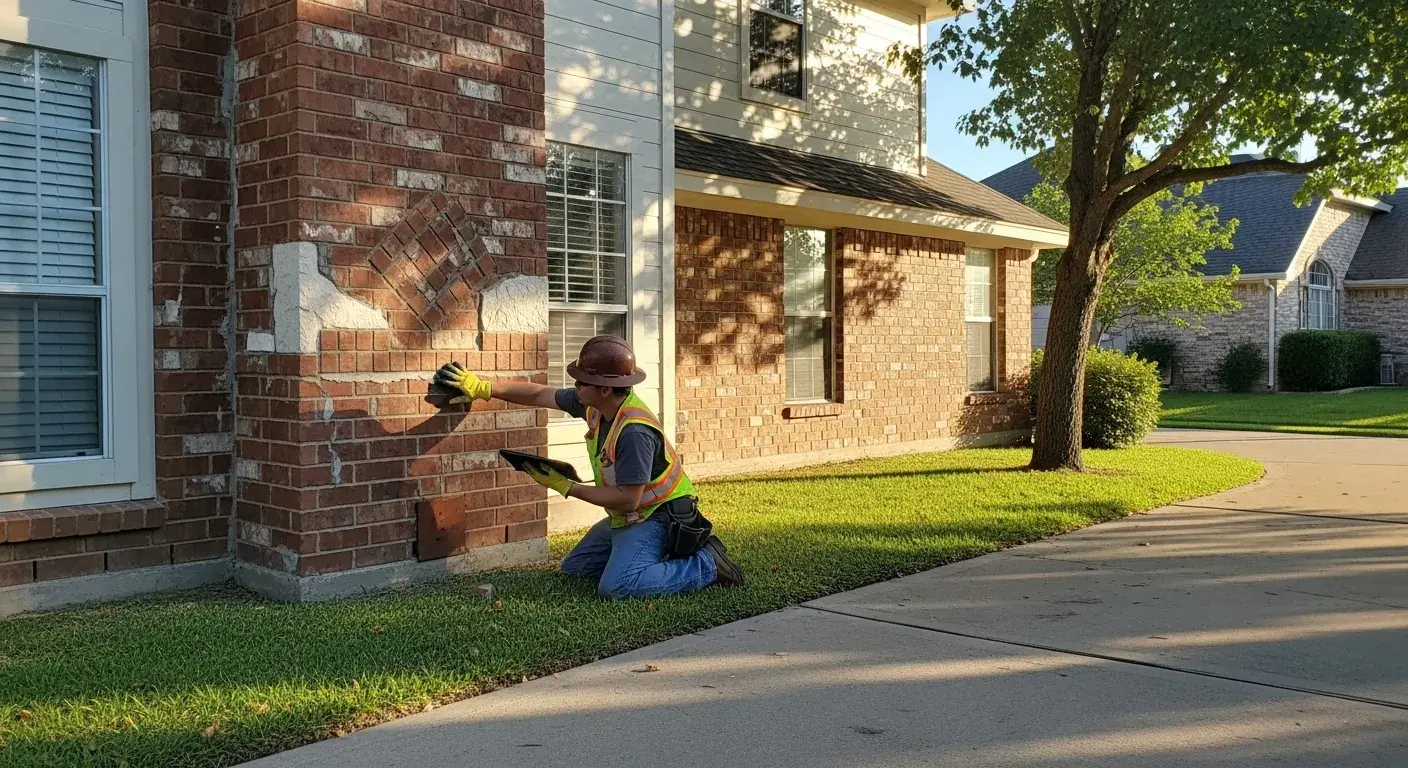Loading article...
Start-to-finish look at a professional chimney inspection in Katy: tools, tests, and what we check.


Mike Johnson
Senior Chimney Specialist
Published
10/30/2025
I’ve lost count of how many times I’ve arrived at a home in Katy, TX and heard the same line:
“We’ve never had a chimney inspection before — what actually happens during one?”
And I get it. The chimney isn’t something most people think about until it starts smoking up the living room, leaking after a storm, or giving off that strange, burnt odor. But by then, the problem is already deeper than it looks.
Here’s the truth: a professional chimney inspection isn’t just a quick flashlight glance — it’s a full diagnostic process that reveals how healthy (or risky) your fireplace system really is.
If you’ve ever wondered what goes on during a chimney inspection in Katy, this is exactly what happens — start to finish, no fluff, no mystery.
I’ve been inspecting chimneys for years, and one thing always stands out:
The most dangerous chimneys are the ones that “look fine.”
You can’t see the inside of a flue. You can’t spot a hidden crack from your living room. You can’t smell carbon monoxide when gases stop venting properly.
That’s why every homeowner — whether you use your fireplace once a year or every week — needs a professional chimney inspection.
In Katy’s humid climate, we see problems caused by:
Moisture intrusion from small crown cracks.
Creosote buildup hardening from humidity.
Masonry expansion from heat and rain cycles.
Rust and corrosion on metal dampers and liners.
A professional inspection doesn’t just find issues; it prevents them from turning into expensive or dangerous repairs later.
Every professional inspection we perform at Katy Chimney Sweep has two clear sides:
Both are equally important — one protects your home, the other protects your comfort.
Here’s the full process we follow every single time — no shortcuts, no “looks fine” guesses.
Every job begins with a conversation. We ask about your fireplace use, any recent repairs, or symptoms you’ve noticed — smoke backing up, damp smells, odd noises.
This gives us a story to work from before we ever touch a tool. Because every chimney tells its own version of events, and homeowners are often the best historians.
Then we do a full exterior walkaround — looking for visible warning signs: cracks in masonry, leaning structures, rust streaks from metal caps, or missing mortar joints.
Once inside, we start with the firebox and smoke chamber.
We inspect for:
Cracked or missing firebricks.
Damper operation and rust.
Smoke shelf debris and ash accumulation.
It’s amazing how much a single firebox can tell us. Soot distribution, for example, shows airflow patterns; discoloration near the damper can indicate gas leakage or inefficient burning.
That’s the first sign of whether your fireplace is performing safely — or struggling silently.
This is where a professional chimney inspection really earns its name.
We use a high-definition chimney camera to inspect the interior of the flue — inch by inch. This allows us to see areas that would be completely invisible otherwise.
We’re looking for:
Cracks or gaps between flue tiles.
Creosote buildup, which appears shiny or tar-like under light.
Blockages like bird nests or fallen debris.
Moisture staining — often the first clue of leaks.
And the best part? You get to see it too. We show homeowners live footage right on screen — because nothing builds trust like proof.
In Katy homes, this step is critical. Our moisture levels can accelerate flue deterioration faster than homeowners realize, even when the exterior looks perfect.
After visual inspection, we test airflow performance — how well your chimney drafts smoke and heat upward.
We use smoke pencils, thermometers, and pressure meters to measure the flue’s draw.
Poor draft can mean:
Partial obstructions.
Improper flue sizing.
Negative air pressure caused by modern airtight homes.
Why does this matter? Because weak draft leads to carbon monoxide backflow, smoke leakage, and poor combustion — all silent hazards that a basic inspection would never catch.
That’s why a true professional never skips the airflow test.
Then it’s time to climb up.
From the roof, we examine:
The chimney cap – ensuring it’s intact and properly fitted.
The crown – looking for cracks, pooling water, or sun damage.
The flashing – making sure there’s no water entry at the base.
The masonry joints – checking for loose or missing mortar.
In Katy’s mix of heat and storms, this is often where the most serious (and hidden) damage hides. We once found a small crown crack on a two-story home that had let in just enough rain to corrode the liner — and the homeowner had no idea.
That’s why every Katy Chimney Sweep inspection includes a roof-level check. We don’t stop until we’ve verified the entire system.
Finally, we compile everything:
Photos and video footage from inside the flue.
Test results and airflow readings.
Condition notes for each chimney component.
Then we sit down with you and explain it — clearly, honestly, without scare tactics.
If your system is safe, we tell you so. If it needs sweeping, sealing, or repair, we’ll explain exactly why and show you proof.
That’s how professional inspections should always be done — with evidence and education, not assumptions.
The difference comes down to three things:
Anyone can look up a chimney and say “looks good.” But a real professional chimney inspection proves it — with data, documentation, and visual proof.
After years in the field, here’s what we find most often in Katy homes:
Water damage from unsealed crowns or faulty flashing.
Creosote buildup hardened by humidity.
Cracked flue tiles caused by thermal expansion.
Corroded metal liners from moisture exposure.
Animal nesting during spring and summer.
Each issue on its own can seem small — but combined, they compromise safety fast.
That’s why annual chimney inspections aren’t “extra.” They’re essential.
Here’s something I always tell customers that surprises them:
The best chimney inspection ends with nothing to fix.
That’s right — our job isn’t to find problems, it’s to confirm safety.
If everything checks out, that’s a success. You get peace of mind knowing your chimney is ready for the next season.
But if something is off, you’ll know early — long before it turns into a costly or dangerous situation.
That’s what true preventive maintenance looks like.
According to NFPA standards, once a year is the minimum.
But in Katy, local weather makes a strong case for twice a year:
Fall: Before fireplace season begins.
Spring: After winter use to check for moisture damage.
And always after any major storm, fire, or visible leak.
A small inspection today can prevent thousands in repairs tomorrow.
We’re not just in Katy — we’re part of it. Our team knows the local architecture, soil movement, and seasonal patterns that affect chimneys here.
Every inspection we perform at Katy Chimney Sweep combines modern technology with years of local experience.
We don’t just look at chimneys — we understand how they live and breathe in Katy homes.
That’s what real professionalism looks like.
If it’s been over a year since your last inspection — or if you’ve never seen what’s hiding inside your flue — it’s time to call Katy Chimney Sweep.
We’ll show you what a true professional chimney inspection looks like: thorough, transparent, and built around your safety.
Because peace of mind isn’t something you can see — it’s something you earn through a job done right.
Call us today, and let’s make sure your fireplace is ready for every season in Katy, TX.

Senior Chimney Specialist
Mike Johnson is a certified chimney specialist with over 15 years of experience in chimney cleaning, repair, and maintenance. He specializes in Texas climate conditions and has helped hundreds of homeowners maintain safe and efficient chimney systems.

Step-by-step: how a professional chimney check works in Katy, and why it matters.

What a professional chimney inspection in Katy really includes—levels, steps, and why it matters.

What we check, how we test, and when each NFPA inspection level applies in Katy.